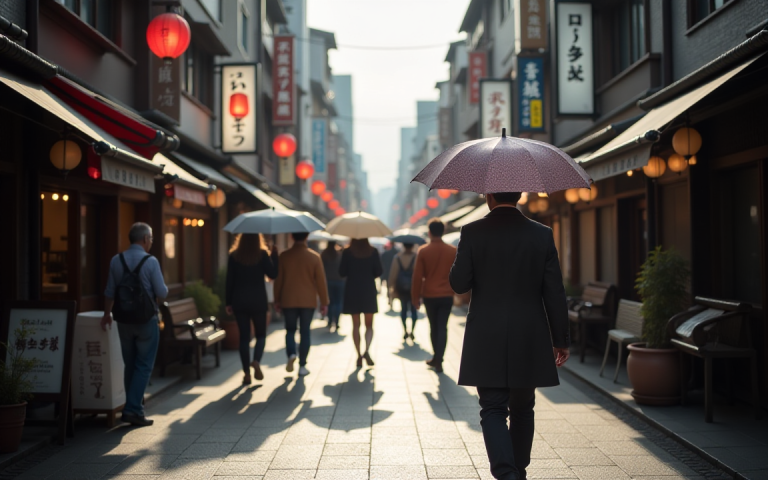On Tuesday, Japan experienced its highest-ever temperature, reaching 41.8 degrees Celsius (107.2 degrees Fahrenheit).
In response, the government recommended that residents remain indoors and pledged measures to mitigate weather-related damage to rice crops, according to a Reuters report.
The country’s meteorological agency reported that Isesaki, an eastern city in Gunma prefecture, recorded temperatures exceeding 41.2 degrees Celsius.
This new high surpasses the previous record set last week in Tamba, a western city in Hyogo prefecture.
According to Japan’s Fire and Disaster Management Agency, over 53,000 individuals have been hospitalised for heat stroke this summer.
“It’s murderously hot today,” Takeshi Ishikawa, a 63-year-old auto worker, told Reuters, as he refilled his water bottle at a central Tokyo fountain.
If it gets to 42 degrees, it would be hotter than my bath that I prepare at 40 degrees.
Environmental challenges
Japan is currently facing a critical environmental challenge, as average temperatures across the nation continue their upward trend, following a record-breaking July for the third consecutive year.
This persistent warming trend is exacerbated by critically low levels of rainfall in the northeastern region along the Sea of Japan, raising significant concerns for the upcoming rice harvest.
The sustained increase in temperatures is indicative of broader climate change patterns affecting the globe.
In Japan, this manifests not only in hotter summers but also in potential shifts in seasonal weather patterns, which can have profound impacts on agriculture and ecosystems.
The agricultural sector, particularly rice farming, is highly susceptible to these climatic fluctuations.
Rice, a staple in the Japanese diet and a cornerstone of its economy, requires specific temperature and rainfall conditions for optimal growth.
Threat to rice harvest
The drought conditions in the northeastern region, a key rice-producing area, pose an immediate threat.
Insufficient water availability can lead to stunted growth, reduced yields, and even complete crop failure, potentially impacting food security and the livelihoods of farmers.
Rice farmers in several regions are grappling with an unexpected surge in stink bug populations, an issue exacerbated by unusually high temperatures.
This proliferation of pests poses a significant threat to yields, coming at a critical juncture as the government prepares to formally introduce a new agricultural policy on Tuesday.
The new initiative is designed to bolster domestic rice production and mitigate the risk of future shortages, a proactive measure in response to growing concerns about food security.
The infestation by stink bugs, known for piercing rice grains and causing discoloration and breakage, could undermine the objectives of this new policy, potentially leading to lower quality harvests and reduced quantities of usable rice, despite the government’s efforts to increase overall output.
Farm Minister Shinjiro Koizumi emphasised the urgency of the situation at a press conference, stating, “We need to act with speed and a sense of crisis to prevent damage” from high temperatures.
He added that the government would provide support for pest control and drought mitigation measures.
In 2023, extreme heat severely damaged rice quality, leading to a critical shortage.
This situation was worsened by the government’s inaccurate assessment of supply and demand, resulting in record-high prices for this essential staple and triggering a national crisis.
The post Japan faces food security crisis amid record heat and stink bug infestation appeared first on Invezz

